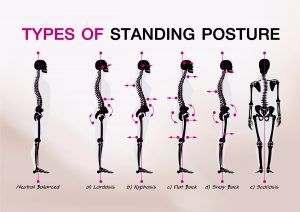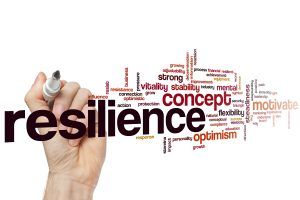Posture Alignment And Movement Therapy FAQ
Posture Alignment and Movement Therapy FAQ
If you’re new to Posture and Movement Therapy or simply want to learn more, this page answers some of the most common questions people ask before getting started. It explains how this work helps you restore ease, balance, and confidence in motion through awareness, learning, and gentle, intelligent movement.
What is Design Posture?
Your body has its own blueprint for balance and support. When alignment is clear, the major joints — shoulders, hips, knees, and ankles — line up in ways that let gravity move through you naturally. Some call this functional alignment or efficient posture, but here it’s understood as something you can feel, not just see.
When that balance is working, muscles share the effort and joints move more freely. You feel supported and steady. When stress, injury, or habit shift how you move, other areas begin working overtime to keep you upright. The result can be tension, fatigue, or discomfort that seems to appear from nowhere.
This work helps you sense those imbalances directly. By noticing the difference between strain and support, you begin to let your body reorganize itself in a way that feels strong, easy, and natural.

What kinds of pain or discomfort can this help with?
Many people begin this work because they’re living with pain that hasn’t fully resolved, even after other treatments.Sometimes the deeper issue isn’t just in the joints or muscles but in the postural imbalances and movement habits the body has built over time.
This approach often helps relieve or reduce discomfort related to:
Back, hip, neck, or shoulder pain
Arthritis-related stiffness
Bursitis
Headaches
Vertigo or balance issues
Nerve tension or irritation
General joint pain or tightness
We work collaboratively with medical professionals when needed. While your doctor addresses medical conditions, this work focuses on restoring healthy movement patterns and balance, often easing the strain behind long-standing pain. Results vary, but many people notice meaningful changes within the first few sessions.

Not at all. Many people come simply to feel better, move more easily, or reconnect with their bodies. This work supports:
Stress reduction
Nervous system balance
Better coordination and performance
A more relaxed, youthful posture
As goals are met, it often becomes a foundation for long-term vitality and well-being.
As initial goals are met, it can grow into a foundational practice that supports vitality and a healthy body and mind for a lifetime.
See how postural therapy hashelped others! Read client testimonials here.
How is this different from physical therapy, a gym workout, or other corrective exercise?
Physical therapy often targets a specific injury or muscle group. This work looks at the whole system, how your body organizes itself, how your nervous system holds patterns, and how awareness changes everything.
It’s not about stretching or strengthening. It’s about teaching your brain to release unnecessary tension and rediscover coordination. You’re not being treated; you’re learning. That learning builds quietly but deeply over time.
Gym workouts build strength, stamina, and cardiovascular health. All valuable. But if your movement patterns are off, if you’re tight, misaligned, or compensating, adding load can reinforce those issues.
This work helps you move well first. Then everything else you do — lifting, running, yoga, or sports — works better.
You may notice:
Less strain and more efficiency
Better joint mechanics
Faster recovery
Fewer recurring injuries
More ease in everyday movement
Think of it as upgrading your operating system before installing more apps.
Can this help with athletic or artistic performance or training?
Yes. If you rely on your body to perform — as an athlete, dancer, musician, or actor — this work can make a difference.
When your system is tangled in old tension, even the best coaching can struggle to land. You’re trying to learn on top of noise. This work quiets that noise. It’s like tuning the instrument before you play.
It’s not about technique. It’s about readiness. When your nervous system is organized and alert, learning becomes faster, movement more expressive, and control more natural.
It feels so gentle. Can it really make a difference?
That is a fair question. We are used to equating effort with results. But this work operates differently.
It is not a workout. It is neuromuscular re-education. You are retraining your brain to release tension and restore coordination. That is why people often feel lighter and more stable even after the first session.
Force can create short-term change. Awareness builds lasting change.
Gentle does not mean weak. It means intelligent.
What does a session look like?
We start by observing how you sit, stand, and move — noticing patterns. Many restrictions aren’t just about joint position but about tension your brain forgot how to release, a phenomenon sometimes called sensory-motor amnesia.
Through guided movement sequences, you help your nervous system remember how ease feels. This taps into neuroplasticity — your brain’s ability to learn and rewire.
Sessions last 60 to 90 minutes. You’ll also receive a short home practice, generally 15 to 45 minutes daily, depending on your needs. The key is consistency, not intensity.
In session, we learn. At home, we retrain.

How often should I practice?
Consistency matters more than duration. Even 15 minutes a day can begin to shift things. You choose the level of commitment that feels right. Some people start small and build gradually. Others prefer daily practice.
This isn’t about pushing harder. It’s about showing up with attention and letting your body learn at its own pace.When the nervous system feels safe, change happens naturally and tends to last.
Will I feel sore afterward?
You might notice new sensations as dormant muscles wake up. Mild fatigue is normal. Sharp pain is not. This work is about awareness, not force.
Is this covered by insurance?
No. This is a non-medical, educational approach. Some clients use HSA or FSA funds. Think of it as an investment in your long-term comfort and self-care.
How much does it cost?
Because needs and goals vary, I offer different therapy options. You can work with me in person or online via Zoom or FaceTime. Together, we’ll decide what fits your needs and estimate how many sessions may help.
Group classes in related yoga and movement modalities can also support your individual sessions.
How do I get started?
Contact me here to schedule a free consultation to see if this work is a good fit. We'll have a conversation about your goals and next steps—no pressure, just clarity and possibility. You don't need special experience, only curiosity and a willingness to explore.
How do I find out more?
You can explore our dedicated resources or set up a free consultation.
Visit our Benefits page for links to research on how yoga therapy, posture alignment, and related somatic methods support health and well-being. Or check the How Posture and Movement Therapy Works page for added detail on movement re-patterning and functionally based posture therapy.
***Individual results may vary. The information on this website is for educational purposes only and is not a substitute for professional medical advice. Always consult your doctor before starting any exercise program. We strive for accuracy but are not liable for any damages. External links do not constitute endorsement. You are responsible for your use of the information. Read our disclaimer for more information.
